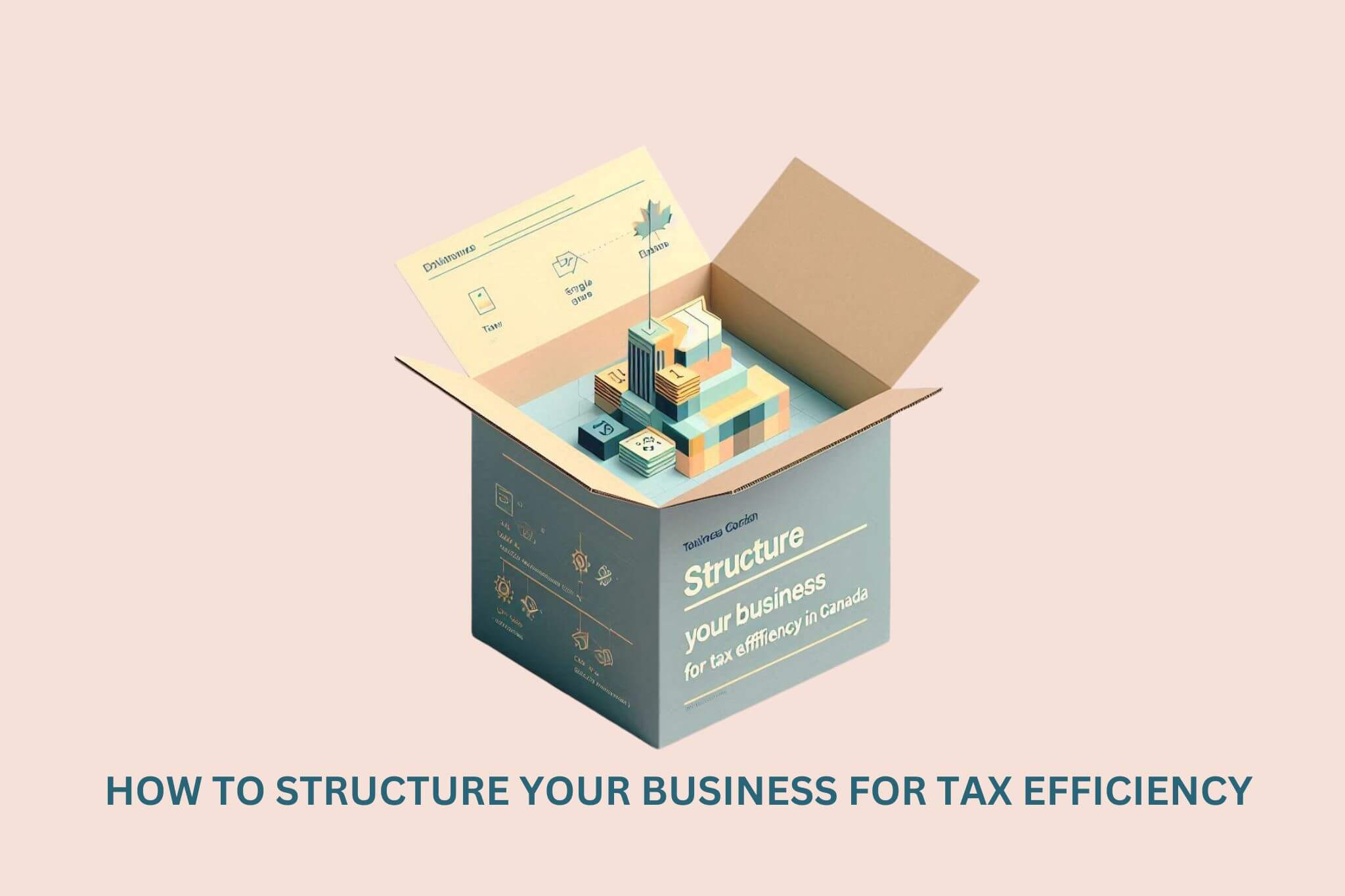
Avoiding PSBs Pitfalls: How to Structure Your Business for Tax Efficiency
Every newly established
business expects better outcomes with excitement, but there are possible
challenges for entrepreneurs. This blog will guide you through CRA tax rules
for personal service businesses, and how to structure your business to avoid
loss with tax-related difficulties.
Key
Takeaways
1.
Understanding PSBs:
o
PSBs are
businesses where the primary asset is the owner’s skills or services.
o
The CRA has
specific rules for PSBs to prevent tax avoidance.
2.
Select Right Structure:
o
Sole
proprietorship, partnership, or corporation? Each involves pros and cons.
o
Consider
liability protection, ease of administration, and tax implications.
3.
The PSB Trap:
o
If your
business falls into the PSB category, you risk losing tax benefits.
o
The CRA may
reclassify your income as employment income, subjecting it to higher tax rates.
4.
Mitigating PSB Risks:
o
Diversify
your client base to reduce dependence on a single client.
o
Document
contracts and invoices meticulously to demonstrate your business’s
independence.
o
Consider
incorporating to separate your personal and business income.
What
Are Personal Services Businesses (PSBs)?
Personal Services
Businesses (PSBs) are any startup or entrepreneurship where the owner is the
primary member with all skill sets or services provider.
The CRA studies Personal
Services Businesses (PSBs) to prevent
individuals from using them to gain tax advantages unfairly.
Table:
Personal Services Businesses (PSBs) description
|
Criteria |
Description |
Examples |
|
Service Provision |
The business
primarily offers services rather than selling products. |
- Consulting firm - Accounting services |
|
Single Client
Dependency |
Most of the revenue
comes from one client or related clients. |
- A freelance writer
with a single major client - A law firm serving
a large corporation |
|
Shareholder
Involvement |
Shareholders actively
participate in providing the services (not just passive investors). |
- A doctor who owns
and works in their medical practice - A lawyer who is a
partner in a law firm |
Pick the Right
Business Structure
1. Single Proprietary
Description: The simplest form of business ownership,
where a person runs business as an individual.
· Pros:
o
Direct
control over business decisions.
o
All income
attributed to the owner personally.
· Cons:
o
No
liability protection.
o
Fully
taxable at the owner’s personal tax rate.
· Example: Jane runs a freelance writing business.
Her income is fully taxable at her personal tax rate.
2. Partnership
Description: Shared ownership with other partners.
· Pros:
o
Shared
responsibilities and resources.
o
Income
distributed among partners based on the partnership agreement.
· Cons:
o
Considered
a PSB if most of the income comes from services.
o
Potential
disputes among partners.
· Example: Alex and Lisa run a graphic design
partnership. Their income is split based on their contributions.
3. Corporation
Description: A separate legal entity from its owners.
· Pros:
o
Provides
liability protection.
o
Allows for
income splitting and tax planning.
· Cons:
o
Complex
administration.
o
Worth it
for tax efficiency.
· Example: XYZ Inc. provides IT consulting services.
By incorporating, they can manage their tax liability effectively.
Table: key tax implications for
Personal Services Businesses (PSBs):
|
Aspect |
Implications |
|
Tax Rates |
PSBs face higher tax rates than regular
corporations. |
|
Small Business Deduction (SBD) |
PSBs cannot access the SBD, which reduces the
corporate tax rate on the first $500,000 of active business income. |
|
Risk Assessment |
The Canada Revenue Agency (CRA) closely scrutinizes
PSBs to ensure fair taxation. |
The PSB Trap- Risk of Reclassification:
- If the CRA deems your business to be a
PSB, they will treat your income as employment income.
- Higher tax rates apply, and you lose
certain deductions.
Avoiding the Trap:
To mitigate the
Personal Services Business (PSB) trap, consider implementing the following
strategies:
- Diversify Your Client Base:
- Collaborate with multiple clients rather
than relying solely on one. This reduces the risk of being classified as
a PSB.
- Maintain clear contracts with each client
to demonstrate independence.
- Shareholder Structure:
- Avoid being the sole shareholder and
primary service provider. Involve other shareholders or family members.
- Consider partnerships or hiring employees
to diversify ownership.
- Record Keeping:
- Keep separate bank accounts for business
and personal expenses.
- Provide detailed invoices that clearly
outline the services given.
- Document Control and Independence:
- Clearly define roles, responsibilities,
and deliverables in contracts.
- Maintain independence by avoiding
excessive client control over your work.
- Educate Yourself and Seek Professional
Advice:
- Stay informed about tax regulations and
PSB rules.
- Consult with a tax professional to tailor
strategies to your specific situation.
Conclusion
To enhance tax
efficiency and avoid the Personal Services Business (PSB) landscape, businesses
must strategically plan their structure. This involves understanding tax rules,
selecting a proper structure, and proactively taking steps.
Professional pieces
of advice are always helping to ensure compliance and maximize your tax
benefits. Remember, a well-structured business is a tax-benefited business!
ASAN Can Help
Empower your financial future with ASAN's expert guidance on Canadian & US Taxation. We strive to align investments with your goals for true financial freedom.
Ready to take the next step?
Contact Us
📞 Phone: +1(613)-981-7097
🌐 Website: asangroupinc.com
Disclaimer:
The information provided in this blog is intended for general guidance and informational purposes only and should not be considered as professional accounting, audit, or assurance advice. Please consult with a certified professional for specific advice tailored to your situation.

